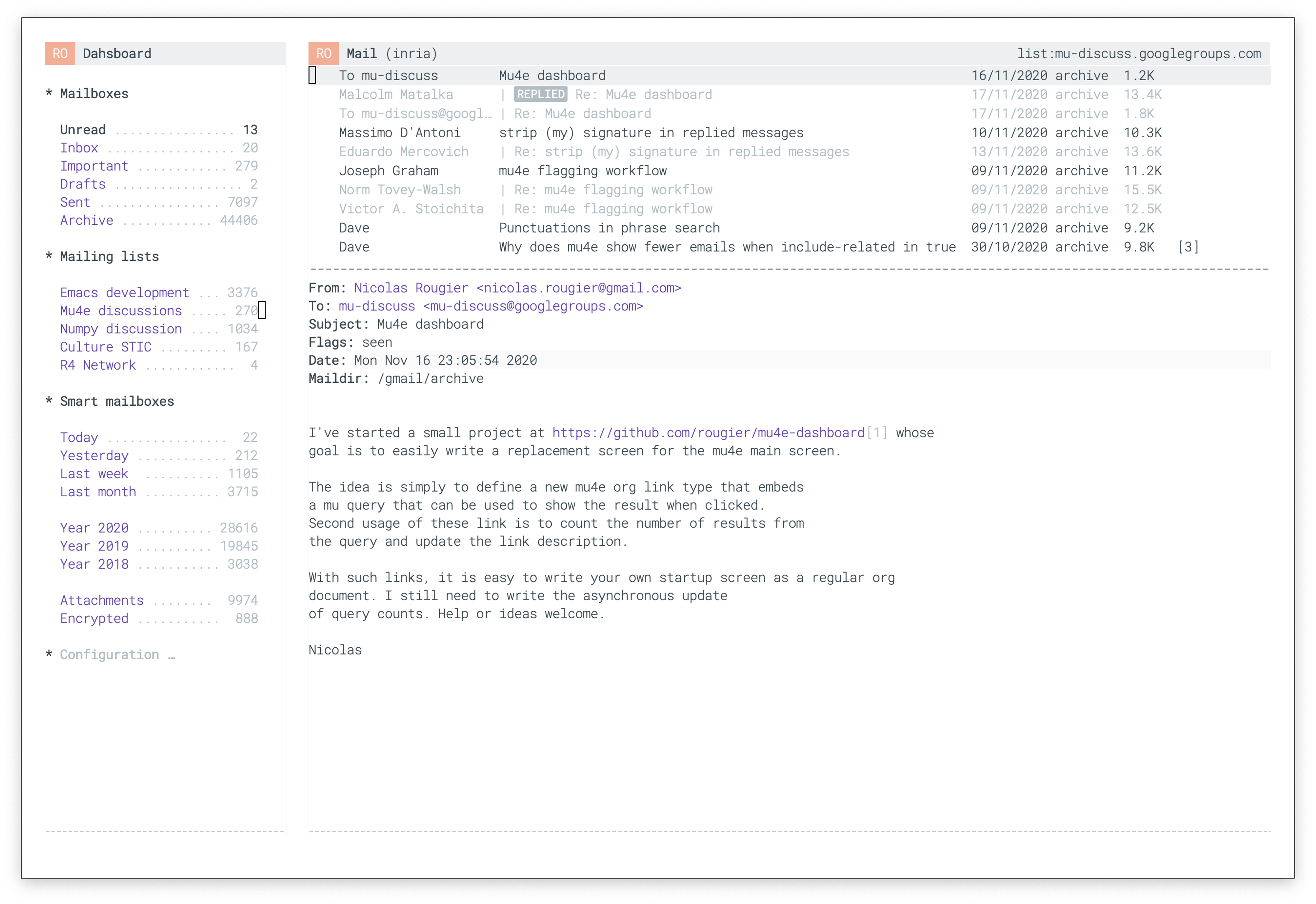mu4e Dashboard
mu4e dashboard provides a new mu4e org link type that allows to execute
various mu4e queries when clicked. Such links can be organised into a
dashboard, by simply writing an org file as shown below:
Screenshot 1: Full page dashboard
Screenshot 2: Side dashboard
Evaluate the buffer and you’re good to go. It is your responsibility to write an org file with links pointing to varius queries on your mailboxes.
The link syntax is quite intuitive:
[[mu:query|format|count][description]]
query must be a valid mu4e query and count (optional) is the maximum
number of results to be returned. When the link is clicked,
mu4e-headers-search is called with the proper query.
[[mu:flag:unread][All unread]]
[[mu:flag:unread||10][Last 10 unread]]
format can be used to specify that query results are to be counted in
order to update the descritption using the given format:
[[mu:flag:unread|%3d][---]]
With the example above, when the link is cliked, the --- part will be
replaced by the number of unread mails.
Keybindings can be configured using the KEYMAP keyword in your org file:
#+KEYMAP: key | elisp function
For example, if you want to bind ; to context switch, you would write:
#+KEYMAP: ; | mu4e-context-switch
In the provided dashboard.org, there’s a definition for a mu query that can be called directly inside the org file using org-babel. This can be convenient if you want to test a query before creating a link. Usage is quite simple:
#+CALL: query(flag:unread, 10)
#+RESULTS:
Just type C-c C-c on the call line and you should see query results under the RESULTS line.
To activate the dashboard, type mu4e-dashboard-mode. This will turn on
mu4e-dashboard-mode minor mode and install any custom keybindings in
the current buffer.
To edit the org file, you’ll need to turn off mu4e-dashboard-mode.
There is a fork of this software which is designed to be used with
notmuch instead of with mu4e. It replaces the standard notmuch-hello
dashboard with an org-mode version. You can find it here.

